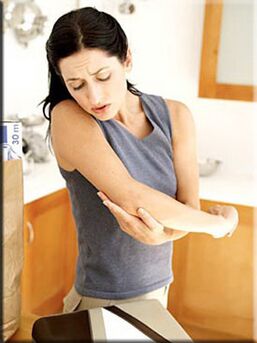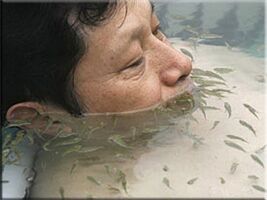Psoriasis can manifest in different forms.Psoriasis options include vulgar (simple, ordinary) or, otherwise, plaque psoriasis (psoriasis vulgaris, plate), powdery psoriasis, fall or psoriasis, flexion) (flexible psoriasis).This section provides a brief description of each variety of psoriasis together with its codex according to the international disease classification (ICD-10).

Plush psoriasis, or Ordinary psoriasis, vulgar psoriasis, simple psoriasis (psoriasis vulgaris) It is the most common form of psoriasis.It is noticed in 80% - 90% of all patients with psoriasis.The plush-shaped vulgar in the form of typical areas raised on the surface of healthy skin areas inflamed, red, warm leather covered with gray or silver white, light, scaling, dry and thickened skin.Red skin below the easily removed gray or silver layer is easily injured and bleeds, because it contains a large number of small vessels.These areas of typical psoracy damage are called psoryic plaque.Psoriatic plaques tend to increase in size, merge with neighboring plaque, forming the entire plate board ("paraffin lakes").
Psoriasis of flexion surfaces (flexible psoriasis), or "Reverse Psoriasis". It usually looks like smooth, not peeling or minimal peeling, red inflammation points that are not particularly protruding over the skin surface, located exclusively in the creases of the skin, in absentia or minimal lesions of other leather areas.Most often, this form of psoriasis affects folds in external genital bodies, on the inside of the hips, axillary depression, folds the stomach obesity (psorian pance), and on the crease of skin under the gland in women.This form of psoriasis is especially sensitive to the deterioration under the influence of friction, skin injuries, and is often accompanied by secondary fungal infections or streptococcal piocer.
Guttate Psoriasis (Guttate Psoriasis) It is characterized by the presence of a large amount of small, raised above the surface of healthy leather, dry, red or purple, similarly in the form for drops, tears or small points, lesions elements.These psoriatic elements usually strengthen large skin surfaces, most often hips, but can be noticed on their feet, forearms, shoulders, heads, back, neck.The ground psoriasis often develops or exacerbates after a streptococcal infection, in typical cases - after streptical tonsilitis or streptococcal Farryngitis.
Psoriasis pustula or Incumbent psoriasis It is the hardest of leather forms of psoriasis and appear to have bubbles or blisters raised above the surface of healthy leather, filled with an accident, transparent inflammatory exudate (pustules).The skin below and above the surface of pustula and around them is red, hot, edematous, lit and thickened, easily drank.Secondary infection may be observed, in which case exudate acquires a gnut.The melt psoriasis can be limited, localized, while its most common localization of distal limbs (arms and legs), ie lower legs and forearms, is called Palmoplantar Pustulose (palmoplant pustulosis).Other, difficult cases, pustular psoriasis can be generalized, with a wide widening of pustules over the entire surface of the body and the tendency to merge into larger pustules.
Causes of psoriasis
The base function of the skin (especially mechanical trauma or irritation, friction and skin friction and pressure and detergent, contact with household solutions, the presence of infected hotspots, or skin allergy, also play a role in the development of psoriasis.
Psoriasis - It is a lot of ways of idiosynative skin disease.The experience of most patients suggests that psoriasis can improve spontaneously or, vice versa, worsen without apparent reason.Studies of different factors associated with the phenomenon, development or deterioration of psoriasis are usually based on the study of small, usually hospitals (not the ambulances), ie obviously harder, groups of patients with psoriasis.Therefore, these studies often suffer from insufficient sample representativeness and the inability to identify the causality in the presence of a large number of others (including unknown or undisguised) factors that may affect the nature of psoriasis.Contradictory finds were often found in different studies.However, the first signs of psoriasis often appear after suffering stresses (physical or mental), skin damage in places of the first appearance of psorithic rashes and / or transmit streptococut infection.Terms, according to numerous sources that can contribute to the deterioration or deterioration of psoriasis flow, include acute and chronic infections, stress, climate change and change of season.Some drugs, especially lithium carbonate, beta-blockers, antides, antimalary medications, anticonvulsions, according to numerous sources are associated with worsening psoriasis or can even provoke its primary phenomenon.Excessive alcohol consumption, smoking, overhang or obesity, improper nutrition can weight psoriasis or complicated its treatment, provokes deterioration.Easy for hair, some creams and handles, cosmetics and perfumes, household chemicals can also cause damage to psoriasis in some patients.

Patients suffering from HIV infection or aids often suffer from psoriasis.It seems to be paradoxical for psoriasis researchers, because the treatment focuses on the number of T cells or their activities usually helps to treat psoriasis, and HIV infection or, in addition, AIDS follow the Number of T cells.However, over time, with the advancement of HIV infection or AIDS, increasing viral load and reduce the number of circulating CD4 + T cells, psoriasis in patients infected with HIV or patients for infected with HIV.In addition to this puzzle, HIV infection usually monitors a strong transaction shift according to TH2, while vulgar psoriasis in non-infected patients is characterized by a strong opponation of the cytokine profile according to TH1.According to the currently adopted hypothesis, reduced amount and pathologically modified CD4 + T-lymphocytes in patients with HIV infection or helping to hyperactivate CD8 + T-lymphocytes, which are responsible for the development or aggravation of HIV infected or patients with AIDS.However, it is important to know that most patients with psoriasis are healthy in relation to HIV, and HIV infection is responsible for less than 1% of psoriasis cases.On the other hand, psoriasis in human people infected with HIV happens, according to different sources, with a frequency of 1 to 6%, which is approximately 3 times higher than the frequency of psoriasis in the general population.Psoriasis in patients with HIV infection and specially helped often continues extremely severe and is poorly borrowed, or not coincided at all with standard therapy methods.
Psoriasis is most often developed in patients with initial dry, thin, sensitive skin than in patients with greasy or good-complete skin, and much more common in women than in men.Psoriasis usually appears in areas of dry or thinner skin, and especially often occur in the sites of skin damage, cuts, in places, in places, pressure or contact with aggressive chemicals, detergents, detergents, solumans, solumans.(This is called Kebner's phenomenon).It is assumed that this phenomenon of Psoriasis is primarily with dry, thin, or injured skin related to the fact that the body is easily penetrated in the skin of the skin from infections) or in the presence of skin damage.The most favorable conditions for the development of psoriasis are therefore opposite the most favorable conditions for the development of a fungal leg infection (such a "athlete") or armpit, an inguge region.For the development of fungal infections, the most favorable, wet skin, for psoriasis, on the contrary, dry skin causes dry (non-expert) chronic inflammation, which in turn causes symptoms characteristic of psoriasis, such as itching and increased spread of leather cells.This, in turn leads to further increased skin dryness, and due to inflammation and improved spread of keratinocytes, and due to the fact that the infected body consumes moisture, which would otherwise serve with humid skin.To avoid excessive skin dryness and reduce psoriasis symptoms, patients with psoriasis are not recommended using burns and scrubs, because they do not damage the skin, which protects the skin from drying and from the clergy penetration.It is also recommended to use a talk or baby that smokes after washing or bathing to absorb excess moisture from the skin, which will otherwise, "get" an infected agent.In addition, the use of the product that moisturizes and feed the skin and lotions that improve the function of the sebaceous glands is recommended.It is not recommended to abuse soap, detergents.You should try to avoid skin contact with solvents, household chemicals.
Diagnosis of psoriasis
The diagnosis of psoriasis is usually simple and based on a characteristic skin appearance.There are no diagnostic procedures or blood tests specific to psoriasis.However, with active, progressive psoriasis or its difficult course, confirming the presence of an active inflammatory, autoimmune, rheumatoid factor, leukocytosis, increased ESR, etc.), as well as endocrine and biochemical disorders.Sometimes the skin biopsy is needed to exclude other skin diseases and histological confirmation (verification) diagnosis of psoriasis.During the patient's biopsy with psoriasis, beams of so-called tears, massive skin infiltration, macrophages, the sections of the skin under the skin under the layer of the skin under the layer of the skin under the skin layerunder the layer of the skin under the cork.Another characteristic sign of psoriasis is points and ease of bleeding from the skin under the Shapht, which is also associated with the acceleration of angiogenesis and pathologically increased permeability and fragile leather vessels in the lesion (skin symptom).
Alternative treatment of psoriasis
For the symptomatic treatment of vulgar psoriasis, some of the countries in some countries use ichthyotherapy in some resorts with open thermal sources.The Fish of the Garra Rufa that lives there eats skin on psoriatic plaque, without touching healthy areas.After such treatment, improving the situation of patients is observed in six or more months.Successful location in Suptropica allows you to combine vacations in comfortable hotel rooms with fish spa and sea baths.At your request, Hotel Cook will prepare a special diet.Water in bathtub with fish The Gar Rufa exceeds the three ---- stopping (mechanically) ultraviolet sterilization and biological purification).Sun, sea, fresh air, special diet - all this in the complex helps achieve the positive effect of the bathroom with a miracle fishing.Daily spraying with a powdered sugar mixture and Štrob potato will help remove psoriotic boards.
Treatment of psoriasis with folk drugs
- To deal with psoriasis, Give up fat, pork, smoking, chocolate, spices, alcohol, coffee and sweets.Enrich a diet by fermented milk products, fresh herbs, roasted apples, fish and hone salads.Eat a lot of vegetable oils rich in necessary fatty acids) and products containing lecithin.
- Eat food In cooked, boiled or steamed (excluded fried and smoked) from the diet.
- Refuse food that increases the acidity in the body- Give the advantage to products that alkalize the body.Some people on the web repeatedly testified that only a change in the diet in the direction of alkalization contributed to a complete renovation of health, not only from Psoriasis, but also old chronic diseases.
- Wash Only the baby or floor soap, regularly bathes with the decktions of the Castina, hops and violets of three.
- Follow Surgery (1-2 day hungry).























